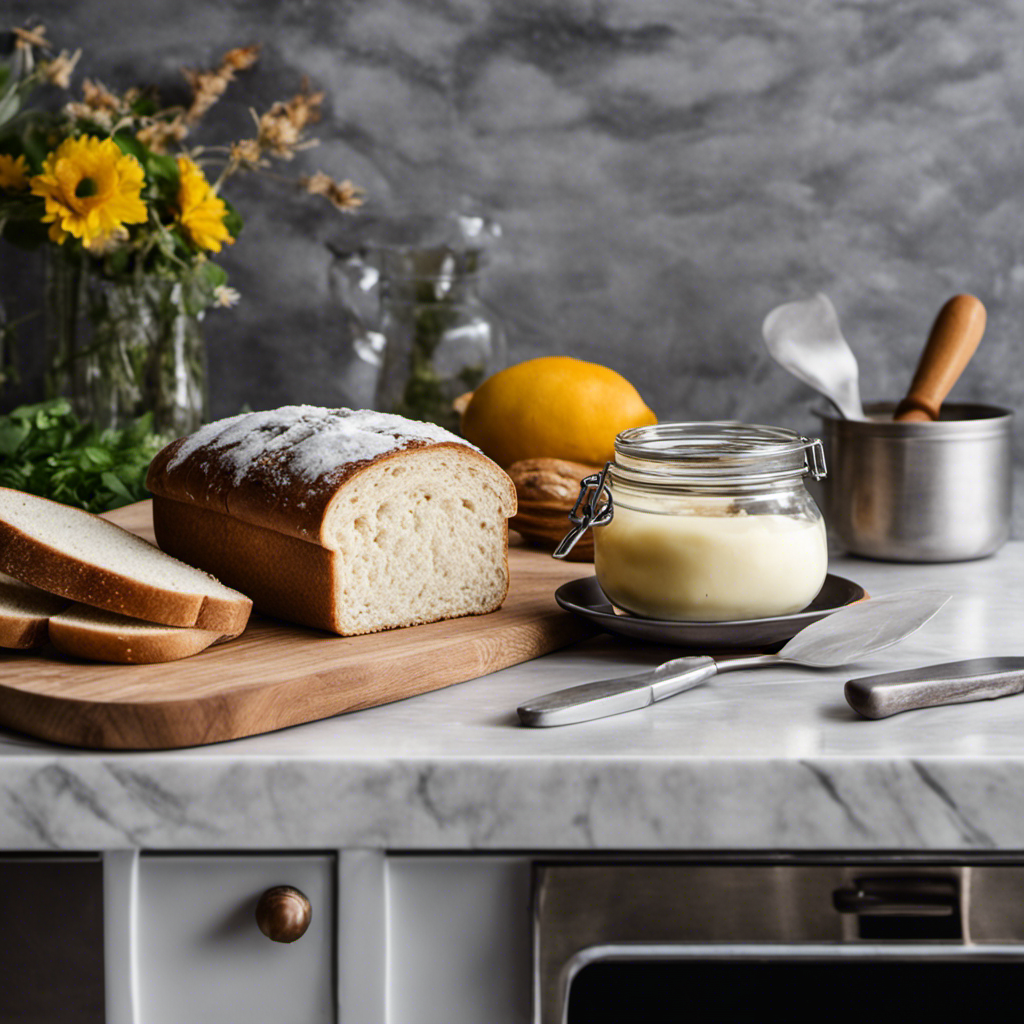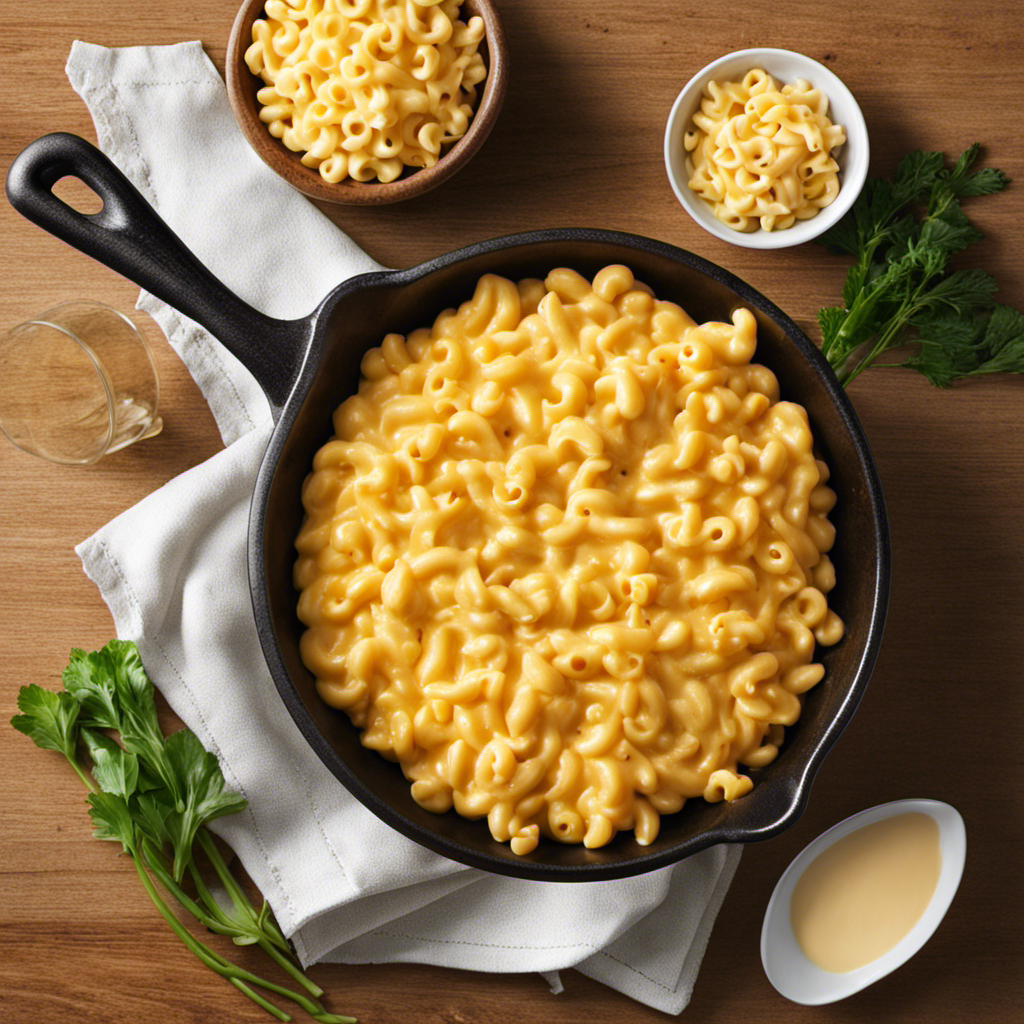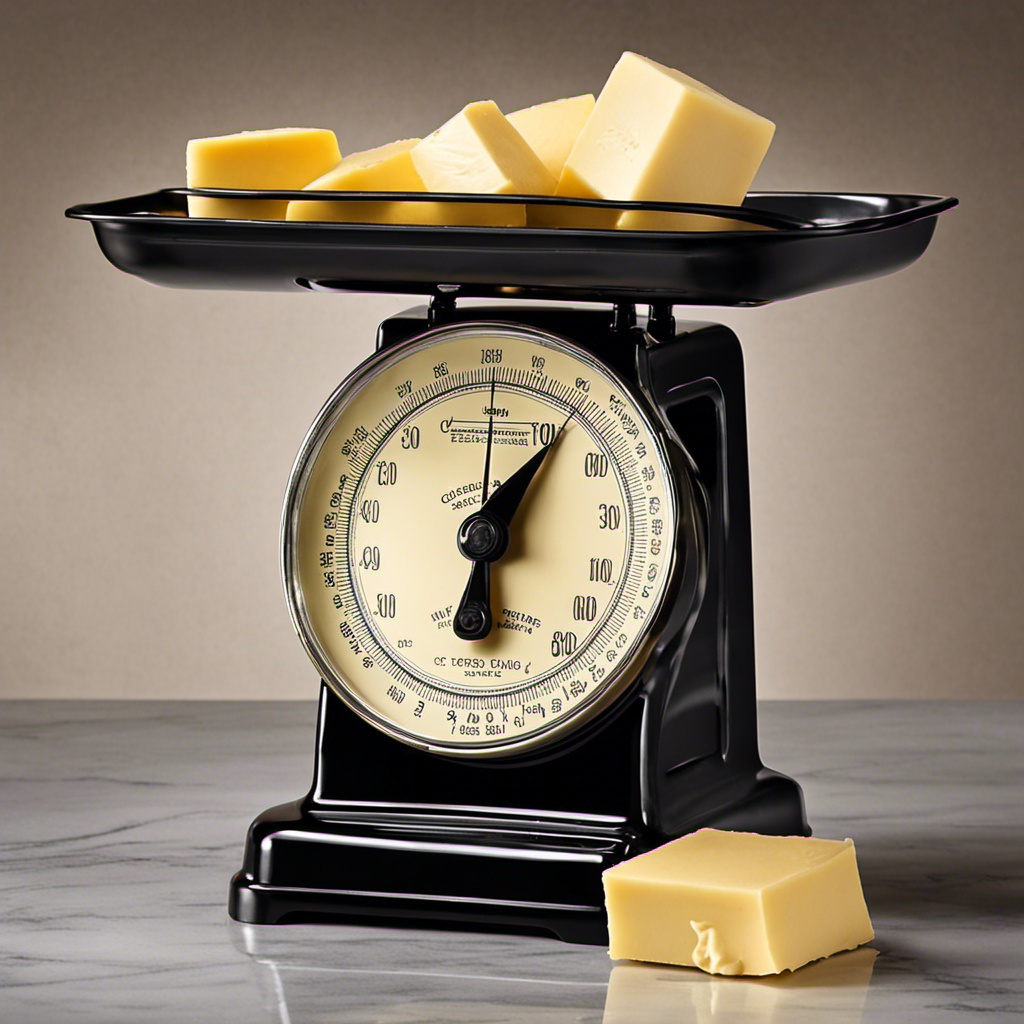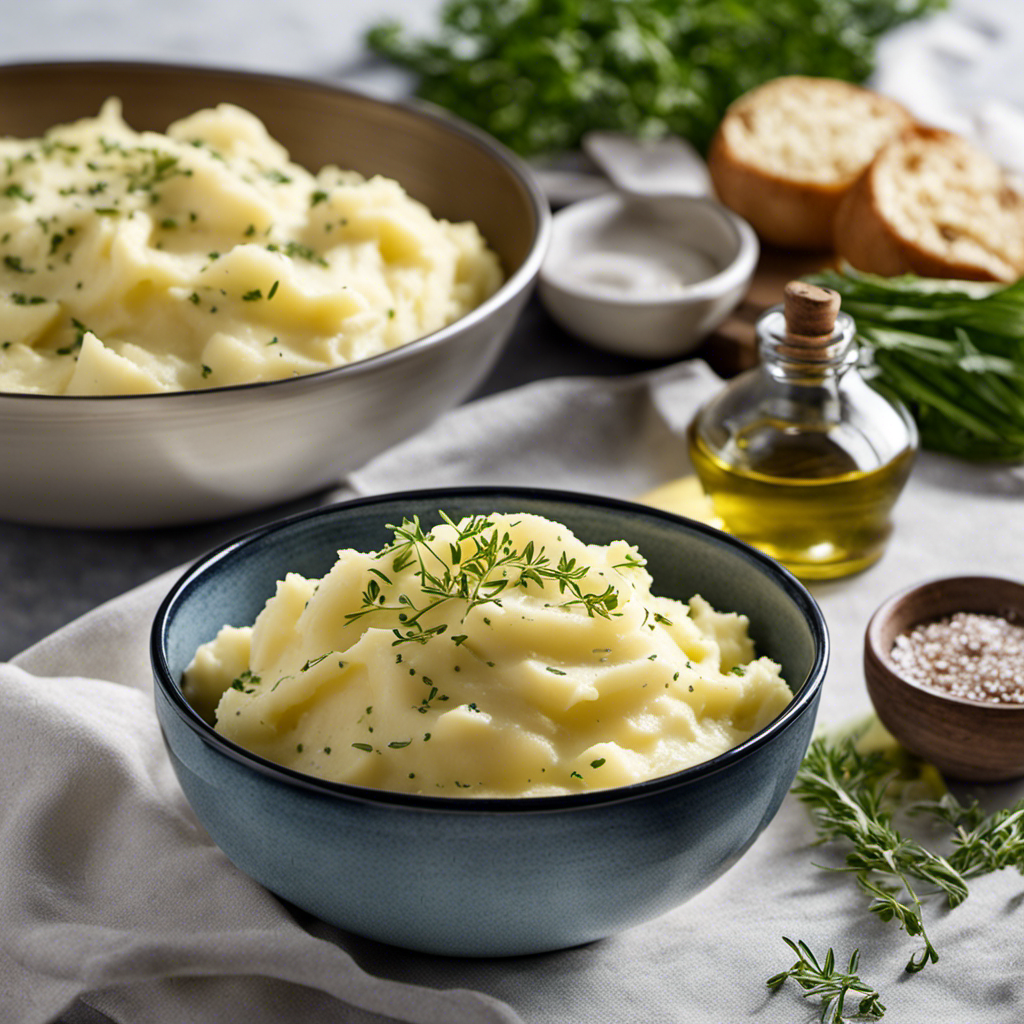I have found a revolutionary method to increase my magnesium levels – creating my own magnesium butter! It’s unbelievably simple and has become a essential part of my everyday regimen.
In this article, I’ll guide you through the process step by step, ensuring you have all the information you need to create your own magnesium butter. From choosing the right ingredients to achieving the perfect consistency, I’ll provide practical tips and evidence-based information to help you reap the benefits of this amazing homemade remedy.
Let’s get started!
Key Takeaways
- Magnesium butter plays a crucial role in over 300 biochemical reactions in the body, helps with muscle and nerve function, regulates blood pressure, and supports a healthy immune system.
- When choosing ingredients for magnesium butter, opt for high-quality options such as grass-fed, organic, and cultured butter, which offer better taste and nutritional value.
- Accurate ingredient measurements using a kitchen scale ensure consistent results, precise ratios, easy recipe adjustments, and minimize waste.
- Proper mixing techniques involve thoroughly combining ingredients with a mixer, starting on low speed, adding liquid or thickening agent as needed, and scraping down the sides of the bowl for proper incorporation.
Why Magnesium Butter
Why should you use magnesium butter?
Well, let me tell you about the health benefits and why it is one of the best alternative remedies out there.
Magnesium is a vital mineral that plays a crucial role in over 300 biochemical reactions in our bodies. It helps with muscle and nerve function, blood pressure regulation, and even supports a healthy immune system. Unfortunately, many people are deficient in magnesium, which can lead to various health issues.
This is where magnesium butter comes in. By applying it topically, your body can absorb the mineral directly through the skin, bypassing the digestive system. This method ensures maximum absorption and effectiveness.
Choosing the Right Ingredients
When choosing the right ingredients for your recipe, be sure to select high-quality butter. The type of butter you choose can greatly impact the taste and nutritional value of your final product.
There are several ingredient options when it comes to butter, including grass-fed, organic, and cultured varieties. Grass-fed butter is made from cows that have been exclusively fed grass, resulting in a higher content of omega-3 fatty acids and vitamins. Organic butter is produced without the use of pesticides or synthetic fertilizers, making it a healthier choice for both you and the environment. Cultured butter undergoes a fermentation process, which enhances its flavor and texture.
Regardless of the option you choose, high-quality butter can provide health benefits such as improving digestion, supporting brain health, and boosting nutrient absorption.
Measuring and Mixing
When it comes to making the perfect dish, accurate ingredient measurements are crucial. Whether it’s a pinch of salt or a cup of flour, precise measurements ensure that your recipe turns out just right.
In addition, proper mixing techniques can make all the difference in achieving a smooth and well-incorporated batter or dough.
Lastly, time-saving measuring tips can help streamline your cooking process and make it more efficient.
Accurate Ingredient Measurements
To accurately measure the ingredients for your magnesium butter, use a kitchen scale to weigh the amounts of each ingredient. Measuring accuracy is crucial in ensuring the right ingredient ratios for a successful and effective homemade magnesium butter. Here are five reasons why using a kitchen scale is important:
-
Consistency: By weighing your ingredients, you can achieve consistent results every time you make magnesium butter.
-
Precision: Measuring by weight provides a more precise measurement compared to volume, resulting in a more accurate ratio of ingredients.
-
Adjustability: If you need to adjust the recipe or make a different batch size, using a kitchen scale allows you to easily scale the ingredients accordingly.
-
Recipe replication: When using precise measurements, it becomes easier to replicate the recipe and achieve the same desired results.
-
Ingredient efficiency: By accurately measuring the ingredients, you can ensure that each component is used efficiently, minimizing waste and maximizing the effectiveness of your magnesium butter.
Proper Mixing Techniques
Using a hand mixer or stand mixer can help ensure that all of the ingredients are thoroughly combined. This is especially important when making magnesium butter, as it needs to have a smooth and creamy consistency. When using a mixer, it’s important to start on low speed and gradually increase to prevent splattering. If the mixture is too thick, you can add a small amount of liquid, such as water or milk, to help it blend better. On the other hand, if the mixture is too thin, you can add more powdered sugar or a thickening agent like cornstarch. Troubleshooting Tips: If the mixture is too lumpy, you can try using a sieve to remove any clumps. Additionally, if the mixture is not holding its shape, you can refrigerate it for a few minutes before continuing to mix. Remember to scrape down the sides of the bowl occasionally to ensure all ingredients are incorporated properly.
| Troubleshooting Tips | Possible Solutions |
|---|---|
| Mixture is too lumpy | Use a sieve to remove clumps |
| Mixture is too thin | Add more powdered sugar or thickening agent |
| Mixture is not holding shape | Refrigerate for a few minutes and continue mixing |
Time-Saving Measuring Tips
One way you can save time when measuring ingredients is by using measuring cups with clear markings. These cups have measurements engraved on them, making it easy to see the exact amount you need without having to guess or use additional utensils.
In addition to using clear measuring cups, there are other time-saving hacks you can implement to make the process of ingredient measuring more efficient:
-
Pre-measure ingredients: Take the time to measure out all the ingredients you will need before starting the recipe. This way, you won’t have to stop and measure each ingredient as you go.
-
Use a digital kitchen scale: Instead of measuring dry ingredients like flour or sugar with cups, weigh them using a digital scale. This ensures accuracy and saves time.
-
Level off ingredients: When measuring dry ingredients, use a straight edge, like a knife or spatula, to level off the top of the measuring cup. This avoids the need for additional measuring or adjusting.
-
Use measuring spoons: For small amounts of ingredients, like spices or extracts, use measuring spoons instead of estimating or pouring directly from the container.
-
Clean as you go: Keep your workspace clean and organized by putting away measuring utensils and ingredients as soon as you’re done with them. This saves time and prevents clutter.
Heating and Melting
Start by heating the magnesium flakes, melting them slowly in a double boiler. This technique ensures a controlled and even heat distribution, preventing the flakes from burning or sticking to the pot.
The double boiler consists of two pans, one placed inside the other. Fill the bottom pan with water and bring it to a simmer. Then, place the top pan with the magnesium flakes on top of the simmering water. The indirect heat will gradually melt the flakes without overheating them.
Stir occasionally to ensure uniform melting. It’s important to note that magnesium has a low melting point of 650 degrees Celsius, so it is crucial to avoid direct heat sources like stovetops or microwaves to prevent potential fire hazards.
Adding Magnesium Oil
To incorporate magnesium oil into your skincare routine, simply apply a small amount to your skin and gently massage it in. Magnesium oil is a concentrated form of magnesium chloride that can be easily absorbed through the skin. It offers several benefits for your skin and overall health.
Here are the benefits of incorporating magnesium oil into your daily routine:
-
Relieves muscle tension and cramps: Magnesium is known for its muscle relaxant properties, and applying it topically can help alleviate muscle pain and stiffness.
-
Improves sleep quality: Magnesium helps regulate the production of melatonin, the hormone responsible for sleep. Applying magnesium oil before bed can promote a restful night’s sleep.
-
Reduces stress and anxiety: Magnesium has a calming effect on the nervous system, helping to reduce stress and anxiety levels.
-
Enhances skin health: Magnesium oil can help improve the appearance of the skin by reducing inflammation, promoting hydration, and supporting collagen production.
-
Supports overall wellbeing: Magnesium plays a crucial role in various bodily functions, including energy production, nerve function, and bone health.
Incorporating magnesium oil into your daily skincare routine is a simple and effective way to reap these benefits and support your overall health and well-being.
Achieving the Perfect Consistency
When it comes to achieving the perfect consistency for spreads or creams, there are a few texture tips that can make a big difference.
First, it’s important to find the right balance between creamy and spreadable. You want a texture that is smooth and easy to spread, but not too runny or too thick.
Balancing thickness and smoothness is key to creating a product that is enjoyable to use and provides the desired results.
Texture Tips
For a smoother texture, make sure you thoroughly blend the ingredients together. This is an essential step in achieving the perfect consistency for your magnesium butter. Here are some texture techniques that will help you achieve smoothness:
-
Use a high-speed blender or food processor to blend the ingredients. This will ensure that all the ingredients are evenly incorporated and will result in a smoother texture.
-
Add a small amount of liquid, such as water or oil, to the mixture. This will help to loosen the ingredients and make them easier to blend, resulting in a smoother texture.
-
Gradually add the dry ingredients to the wet ingredients while blending. This will prevent clumping and ensure a smooth and creamy texture.
-
Blend the mixture for a longer period of time. This will help to break down any lumps and create a smoother consistency.
-
Strain the mixture through a fine mesh sieve to remove any remaining lumps or particles and achieve a silky smooth texture.
Creamy or Spreadable
Achieve a delightfully creamy and spreadable texture by ensuring that you thoroughly blend the ingredients together. When it comes to making magnesium butter, the texture can make all the difference in the world. You want it to be smooth and easy to spread, so that it can be enjoyed on toast, crackers, or even used as a dip for vegetables.
To achieve the perfect texture, it’s important to understand the difference between spreadable and whipped. Spreadable butter is soft and easily spreadable, while whipped butter has a lighter, fluffier consistency.
To add some variety to your magnesium butter, you can experiment with different flavors. Consider adding a touch of honey for a hint of sweetness, or try mixing in some herbs and spices for a savory twist. The possibilities are endless, so don’t be afraid to get creative with your flavors.
Balancing Thickness and Smoothness
To balance the thickness and smoothness of your spread, try adding a little bit of oil to achieve the desired consistency. This simple step can make a big difference in the texture of your magnesium butter.
In addition to adding oil, there are other thickening techniques you can use to achieve smoothness. Here are some options to consider:
- Incorporate a small amount of arrowroot powder or cornstarch into the mixture.
- Use a blender or food processor to thoroughly mix the ingredients together.
- Let the butter sit in the fridge for a few hours to allow it to thicken.
- Add a small amount of melted beeswax to create a thicker consistency.
- Experiment with different ratios of ingredients until you find the perfect balance.
Storing and Preserving
When storing magnesium butter, it’s important to keep it in an airtight container to maintain freshness. Proper storage techniques can help extend the shelf life of this nutritious and versatile spread. Here are some tips to ensure your magnesium butter stays delicious for as long as possible:
| Technique | Description | Benefits |
|---|---|---|
| Use an airtight container | Prevents exposure to air and moisture, which can lead to oxidation and spoilage. | Maintains freshness and flavor |
| Store in a cool, dark place | Avoids exposure to heat and sunlight, which can cause the butter to go rancid. | Preserves nutrients and extends shelf life |
| Keep away from strong odors | Prevents cross-contamination and preserves the natural aroma of the magnesium butter. | Maintains the butter’s original quality |
| Stir occasionally | Helps distribute any natural oils that may separate and settle at the top of the butter. | Ensures a consistent texture and flavor |
Using Magnesium Butter
After learning how to store and preserve your homemade magnesium butter, it’s time to reap the benefits of incorporating it into your skincare routine. Using magnesium butter can provide numerous benefits for your skin and overall well-being.
Here are some ways you can incorporate magnesium butter into your skincare routine:
- Apply a small amount of magnesium butter to your face before bed to promote relaxation and improve sleep quality.
- Massage magnesium butter onto dry, cracked heels or rough patches of skin to nourish and moisturize.
- Use magnesium butter as a natural deodorant to combat body odor and keep you feeling fresh.
- Apply magnesium butter to soothe sunburned or irritated skin, providing relief and aiding in the healing process.
- Incorporate magnesium butter into your post-workout routine to help relax muscles and reduce inflammation.
Benefits and Potential Side Effects
If you’re considering incorporating magnesium butter into your skincare routine, it’s important to be aware of the benefits it can provide as well as any potential side effects.
Magnesium is an essential mineral that plays a vital role in various bodily functions, including maintaining skin health.
Using magnesium butter can help improve skin hydration, reduce inflammation, and promote collagen production, resulting in a smoother and more youthful complexion.
However, it’s crucial to note that there are potential risks associated with excessive magnesium intake, such as diarrhea, nausea, and abdominal cramps.
Therefore, it is recommended to follow the recommended dosage guidelines provided by the manufacturer or consult with a healthcare professional to ensure safe and effective use of magnesium butter.
Frequently Asked Questions
Can I Use a Different Type of Oil Instead of Magnesium Oil in the Recipe?
Yes, you can use alternative oils in the recipe instead of magnesium oil. However, it’s important to note that magnesium oil offers specific benefits like increased absorption. Consider the benefits before making a substitution.
How Long Does Magnesium Butter Typically Last Before It Spoils?
Magnesium butter typically lasts for about 3-4 weeks before it spoils. To maximize its shelf life, store it in an airtight container in the refrigerator. Remember, freshness is key for optimal benefits!
Are There Any Potential Side Effects of Using Magnesium Butter?
Potential health risks of using magnesium butter include diarrhea and stomach cramps, especially when exceeding the recommended dosage. It’s important to follow guidelines and consult a healthcare professional if any adverse effects occur.
Can Children Use Magnesium Butter?
Yes, children can use magnesium butter. It is important to follow the recommended dosage for children and consult with a healthcare professional. Magnesium has several benefits for children’s health, including promoting better sleep and supporting healthy growth and development.
Can Magnesium Butter Be Used Topically for Skin Conditions?
Yes, magnesium butter can be used topically for skin conditions. The benefits of magnesium for skin include promoting healthy cell function and reducing inflammation. The best way to apply magnesium topically is by massaging the butter onto the affected areas.
Conclusion
In conclusion, making magnesium butter is a simple and practical way to increase your magnesium intake and enjoy its numerous health benefits.
By using the right ingredients, measuring and mixing accurately, and adding magnesium oil, you can create a creamy and effective butter.
Storing it properly will ensure its preservation and allow for easy use.
One example of the benefits of magnesium butter is a case study where a woman experienced improved sleep quality and reduced muscle cramps after incorporating it into her nightly routine.
With its ease of preparation and potential positive effects, magnesium butter is definitely worth a try.










